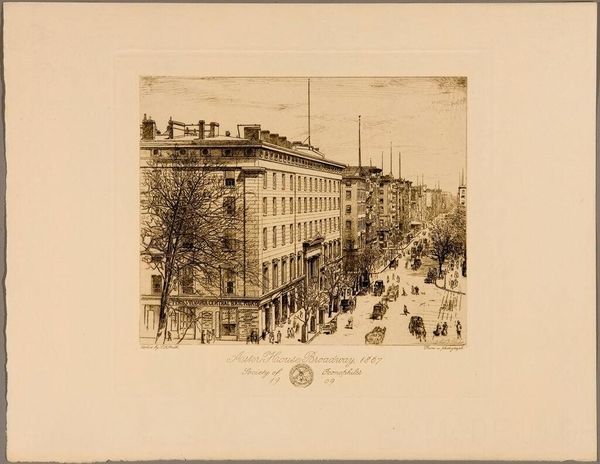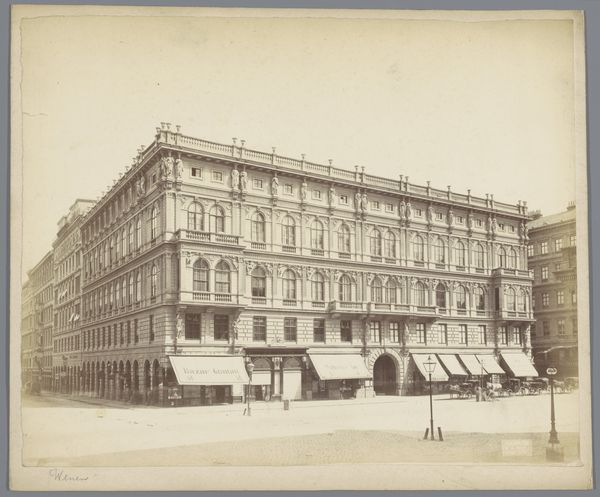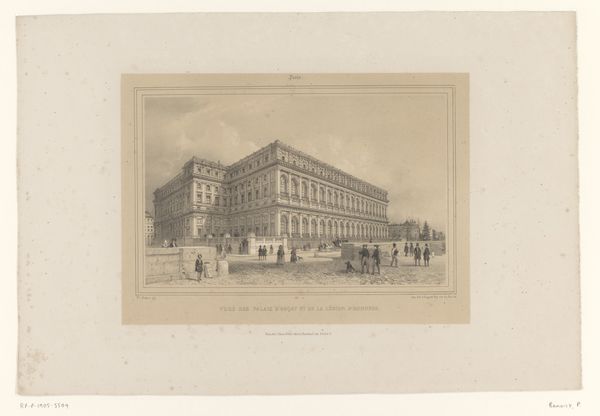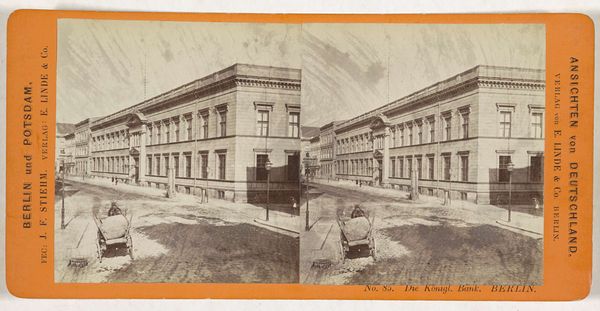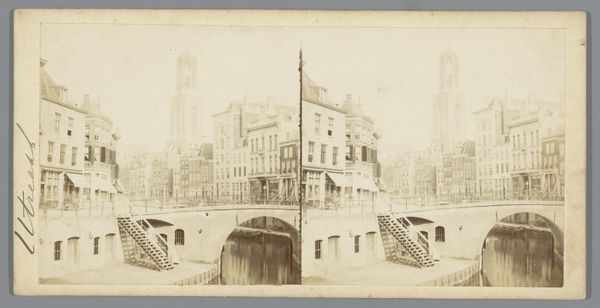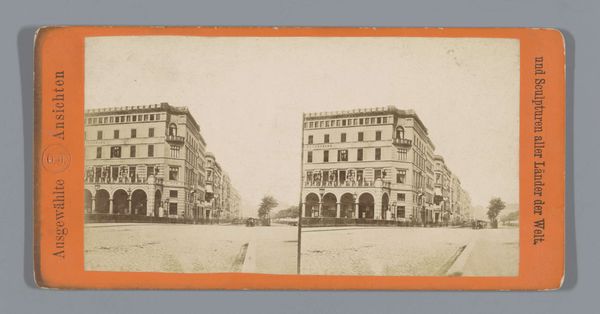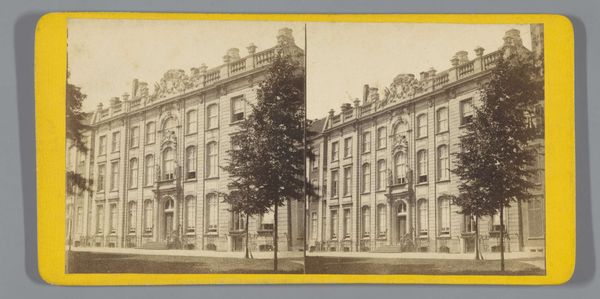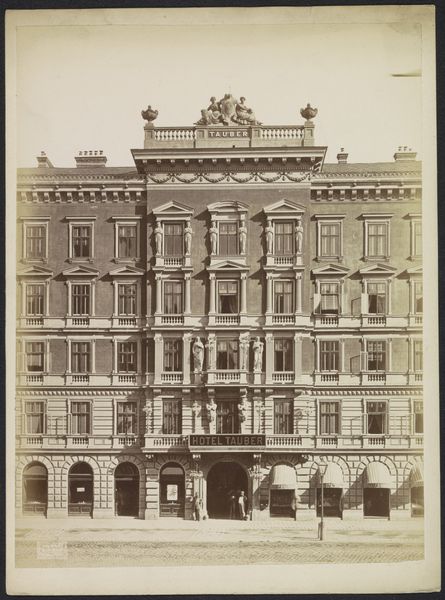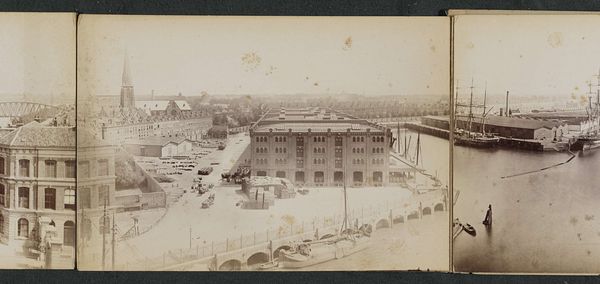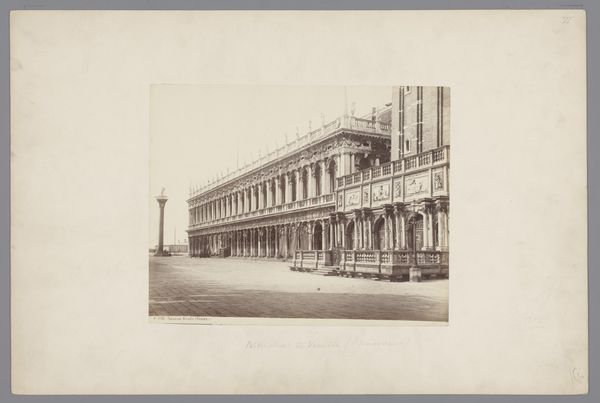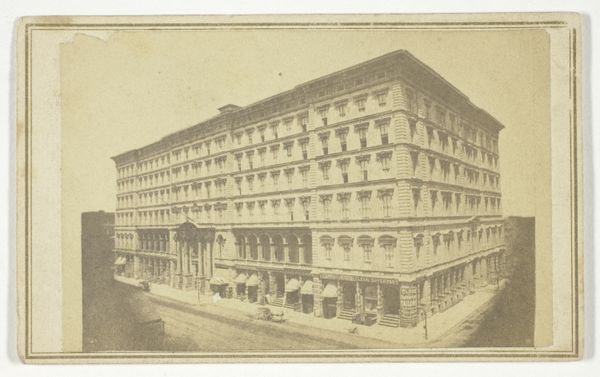
photography, albumen-print, architecture
#
photography
#
coloured pencil
#
orientalism
#
19th century
#
cityscape
#
albumen-print
#
architecture
#
realism
Dimensions: height 86 mm, width 176 mm
Copyright: Rijks Museum: Open Domain
Editor: Here we have Johann Friedrich Stiehm's "Berliner Bauakademie, Berlin", an albumen print from between 1868 and 1870. It’s fascinating to see this historical record of the architecture, but something about the muted tones makes the scene feel so distant. What compositional elements stand out to you? Curator: The composition hinges on the interplay between linearity and repetition. Observe the regimented rows of windows, each a discrete unit contributing to the overall texture of the facade. The photographic perspective, slightly elevated, grants a comprehensive view, emphasizing the Bauakademie's cubic form. Do you see how this form interacts with the surrounding negative space? Editor: I see what you mean; it's very geometric. It almost looks like the building is trying to contain or control the space around it. The lines of the facade are stark against the empty sky. Curator: Precisely. Note also the tonality; the limited palette of greys and browns flattens the image, foregrounding the architectural form over any atmospheric depth. The semiotic implications here are quite telling; the architecture assumes primary importance, overshadowing any potential narrative. Do you find that compelling, or limiting? Editor: I think it's compelling because it focuses attention on the structural details of the building itself, inviting a deeper analysis of its design and form. Looking closely at how the light interacts with different planes of the architecture and the texture of the stonework enhances the geometrical reading, especially with the repeated lines and square windows. I can better appreciate the form and order that the building embodies. Curator: Indeed. In understanding this, we understand the work itself as a document of spatial arrangement and visual design, rather than, say, a study of German life. Editor: So, appreciating its formal properties helps us decode the historical context by examining the construction in terms of line, light, form, and geometrical plane? Curator: Precisely. Focusing on those formal properties provides us with the critical lens we need.
Comments
No comments
Be the first to comment and join the conversation on the ultimate creative platform.
